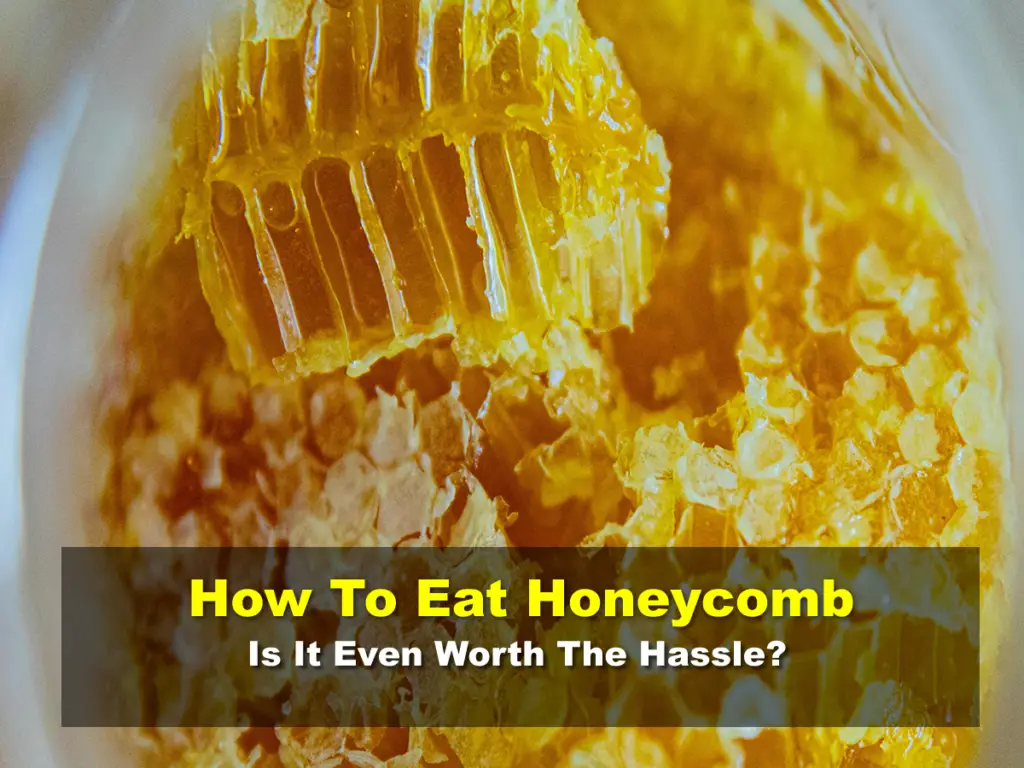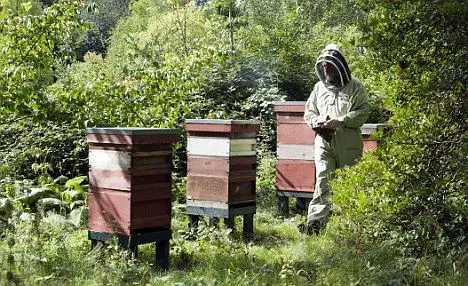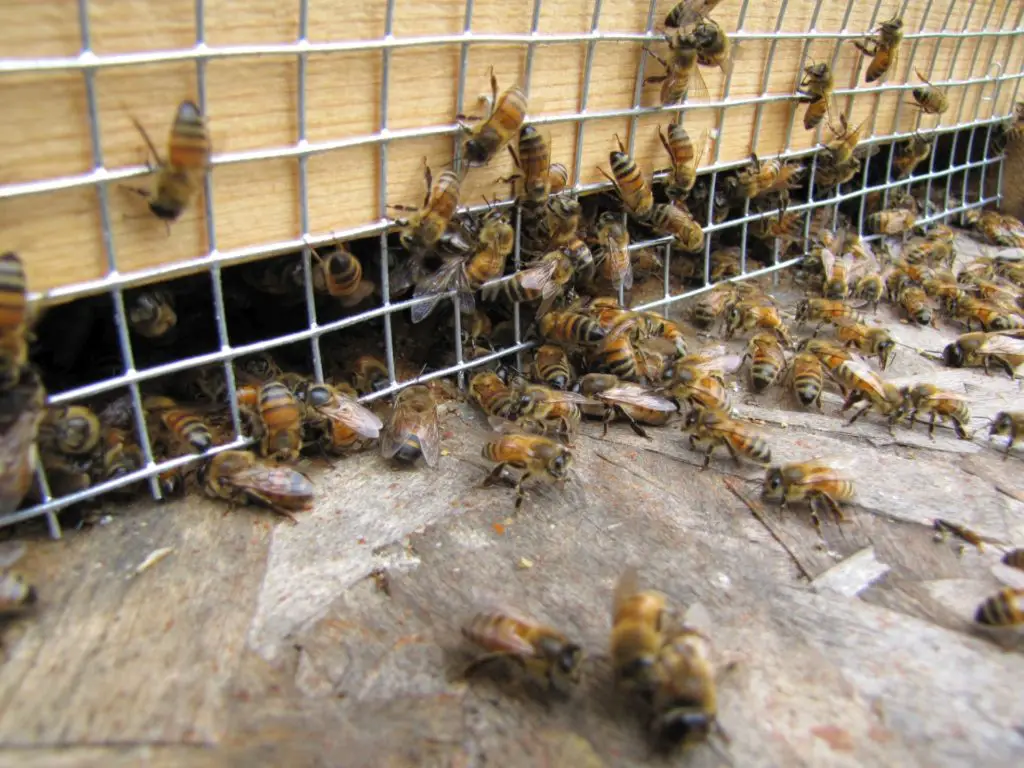Affiliate Disclaimer - As an Amazon Associate I earn from qualifying purchases.
It supports the website. So, Thank you
Most people have tasted honey at least once in their lives and many people include it as a regular part of their diet. But honey isn’t the only product we can get from bees that’s useful as a foodsource. Honeycomb is a fantastic bee product but most people are put off trying it as they aren’t sure how to eat honeycomb.
Honeycomb is incredibly versatile. It can be used as a topping for desserts, salads, or soups but is also just as good eaten on toast.
With such a wide array of honeycomb recipes out there, you might be confused on where to start. But in this guide, I’ll tell you everything you need to know about eating honeycomb and what benefits to expect from it.
Table of Contents
What Is Honeycomb?
Within a beehive (or natural nest), honeycomb is used as a structure for holding bee eggs and honey.
The bees make honeycomb using wax which they secrete from glands located in the abdomen. This wax is made from the honey that a bee consumes and it takes around eight pounds of honey for a bee to make a single pound of wax. No wonder these insects are seen as hard-working creatures!
Why Eat Honeycomb? Is It Good For You?
Over the years, the health benefits of eating honey have been spread far and wide. If honeycomb is a product that’s made from honey then surely it’s just as good for you.
If you’re getting bored of eating honey or simply fancy including something different in your diet then there’s some great news; honeycomb is very good for you.
Of course, as with anything, honeycomb should be eaten in moderation as too much of a good thing can result in the effects being canceled out.
The wonderful thing about honeycomb is that it is packed with naturally occurring sugars, proteins, and carbohydrates so it’s a pretty good all-rounder.
But I’d like to delve a little deeper into the reasons why honeycomb is so good for you so let’s take a look at some of the health benefits.
The Health Benefits
For starters, honeycomb is a natural antioxidant so it’s a great way to rid your body of free radicals and give your immune system a boost.
What’s more, honeycomb contains long chain fatty acids which are known to promote good heart health. We live in a time where heart disease is prevalent with almost 700,000 people dying of it in the USA alone each year. This equates to around one death every 33 seconds, according to the CDC. I’m not saying that eating honeycomb is going to completely eradicate the risk of cardiovascular disease, but it’s certainly one of the ways that you can improve your heart health and lower your risk.
On top of this, honeycomb has anti-inflammatory and anti-microbial properties so it’s an excellent healing food. There is also some research that suggests that honeycomb can help to prevent certain parasites that could live in the gut.
Other health benefits include improved liver function and the easing of symptoms of upper respiratory conditions, particularly in children that are prone to these infections.
If all of that wasn’t enough, studies show that honeycomb could be a fantastic natural alternative to sugar for people that suffer from diabetes. The reason for this is that, while many people use honey as a sugar substitute, honeycomb is actually sweeter so less product is required.
Of course, I couldn’t leave out the fact that honeycomb tastes incredible and has a totally unique texture. The outside has a bite that many people enjoy while inside, you’ll get the ooze of honey. Being sweeter, this is often a draw for many people who prefer honeycomb over the jarred honey you can buy in stores.
Is There Anyone That Should Avoid Eating Honeycomb?
Generally speaking, honeycomb is a healthy food (when eaten in moderation) that most people can consume without any issues.
If you have an allergy to honey then I would not recommend eating honeycomb since it’s made from the same natural ingredients and will likely cause similar reactions. However, I’d also urge you to speak to your doctor who may be able to offer you more tailored individual advice.
It’s also not recommended that pregnant women or children under the age of 12 months consume honeycomb. The reason for this is that there have been studies that have shown there is a potential for honeycomb (and honey) to contain spores of a bacteria known as C.botulinum which causes botulism.
This condition results in harm to the nervous system, and according to the NHS, can cause paralysis. While most people do make a full recovery, the condition can be particularly dangerous to pregnant women and very young children.
Ways To Eat Honeycomb
Now that you know how wonderful honeycomb can be in terms of taste and health benefits, you’re probably keen to include it in your daily diet. The great news is that honeycomb can be eaten in a number of ways so why not try mixing it up with some of the following suggestions.
Spread It On Toast
One of the most popular ways to eat honeycomb is by spreading it on toast. Some people also like to use it as a spread on things like bagels and English muffins; quite simply, the ways you can spread it are endless. It’s really just a case of using your imagination.
Sprinkle Over A Dessert
Since honeycomb is naturally sweet, it makes the perfect addition to desserts. Simply break up a few pieces and sprinkle it over the top of your dessert and enjoy.
Use It In Salads
It might sound strange because salad is savory and honeycomb is sweet but you’d be amazed at how well this sweet natural product compliments a salad.
Add It To A Charcuterie Or Cheese Board
Another way to add a dash of sweetness to your savory snacks is to pop some honeycomb on your charcuterie or cheese boards.
On a cheese board, honeycomb pairs delectably with brie and other soft cheeses while on a charcuterie board, you’ll find that it tastes delicious alongside cured meats and sausage.
Plus, it’s a great way to give your serving boards a unique look and they’ll certainly be something our guests remember at your next dinner party!
Honeycomb As A Snack
You can purchase honeycomb pieces from most health stores and they make for the perfect late-morning snack.
Honeycomb can simply be eaten as-is but there are different ways to enjoy it as a snack. For example, owing to the gum-like texture of the wax, some people like to chew it and then spit out the leftover wax while others like to swallow the lot! It’s really down to personal choice.
Add It To A Smoothie
If you’re looking for a way to sweeten your smoothies then honeycomb is a great solution. As I have already mentioned, honeycomb is much sweeter than honey so you won’t need as much.
Not only will this add a sweet flavor to your honeycomb but it also means that you’re ingested less sugar and that’s something we can all get on board with!
Honey Never Goes Off; Is Honeycomb The Same?
If there’s one thing that honey is well known for, it’s the fact that it never goes bad. There have been examples of honey from thousands of years ago and there’s absolutely nothing wrong with it.
This honey from Ancient Egypt is considered perfectly edible and shows no signs of degradation or deterioration. How amazing is that?!
The reason for this never-ending shelf life can be attributed to a couple of things including the low sugar levels, the pH of the honey, and the methods by which the bees produce it.
Considering that honeycomb is made from honey, we can be thankful that it also won’t spoil.
That said, the longer you keep honeycomb, the more likely it is to crystallize, the same way that honey does. However, this does not mean it has gone bad and it’ll still be perfectly safe to eat. Some people do like to warm the honeycomb over a bowl of boiling water and this helps to remove the crystals.
Final Thoughts
Have you ever wondered how to eat honeycomb and what you can do to include it in your diet? Honeycomb is a wonderfully sweet natural product that has a whole host of health benefits.
It can be used as a spread, as an accompaniment to meats and cheeses, in a smoothie, and even in salads. With so many ways to enjoy honeycomb, it’s easy to include it in your diet and reap the many associated benefits.
All that’s left to do is to choose your favorite way to enjoy it!




